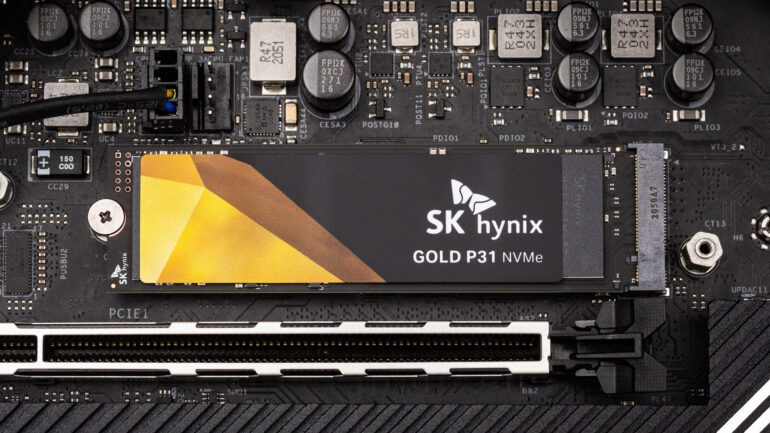TL;DR:
- The local memory chip market is experiencing a boom due to industry-wide recovery and new product releases by NVIDIA, Intel, and AMD.
- Samsung Electronics and SK hynix, key players in the global memory chip market, benefit from partnerships with logic chip leaders.
- New logic chips for AI and high-performance computing drive demand for high-bandwidth memory (HBM).
- SK hynix dominates the global HBM market with a 50% share, while Samsung holds a significant 40% share.
- AMD unveils MI300X, a state-of-the-art AI graphics processing unit (GPU) that improves performance for large language models (LLMs).
- GPUs play an expanding role beyond gaming, propelled by advancements in AI technology.
- Local chipmakers, Samsung and SK, stand to gain from increased demand for GPUs, as they provide HBMs.
- The surge in GPU demand indicates a potential rebound for the memory semiconductor sector.
- SK hynix started mass production of HBM3 in 2022, and Samsung plans to follow suit in the second half of this year.
- Market experts predict a positive outlook for Samsung and SK, with anticipated share price increases and a chip price rebound.
Main AI News:
The local memory chip market is experiencing a remarkable upswing, fueled by the resurgent industry following the release of cutting-edge products by NVIDIA, Intel, and AMD, according to market experts on Thursday.
Samsung Electronics and SK hynix, the dominant players in the global memory chip arena, have solidified their positions as vital partners to these three global leaders in logic chips. Consequently, the shares of these technology powerhouses listed on the KOSPI are expected to surge even further.
In response to the growing demand for artificial intelligence (AI) and high-performance computing (HPC), the three industry giants have recently launched new logic chips. These chips are essential for powering AI and HPC systems, delivering remarkable processing capabilities.
To meet the demands of these advanced technologies, companies are increasingly employing high-bandwidth memory (HBM), a high-speed computer memory interface that utilizes 3D-stacked synchronous dynamic random-access memory (SDRAM). HBM is utilized alongside high-performance graphics accelerators, network devices, high-performance data centers, and even some supercomputers.
It is worth noting that SK hynix led the charge in 2013 when it produced the first HBM memory chip. Since then, it has established a dominant position, currently holding a 50 percent share of the global HBM market. Samsung, the other key player, boasts a substantial 40 percent market share, according to market research firm TrendForce.
Just recently, AMD, a leading U.S. semiconductor firm, unveiled its state-of-the-art AI graphics processing unit (GPU) called MI300X on June 13. This groundbreaking product offers superior performance for large language models (LLMs) and is set to enter mass production before the year’s end. LLMs, which emerged around 2018, are neural network models with a large number of parameters, trained on vast amounts of unlabeled text using self-supervised or semi-supervised learning. These models have proven to excel in a wide range of tasks.
Originally developed to enhance computer graphics performance, particularly in gaming, GPUs have found widespread utilization as accelerators in cryptocurrency mining. However, their role has expanded even further in recent times, largely driven by ChatGPT, an artificial intelligence chatbot created by OpenAI based on its series of generative pre-trained transformer models.
The surging demand for GPUs presents a favorable opportunity for local chip manufacturers, as the product heavily relies on the high-bandwidth memory modules produced by Samsung and SK affiliates.
Market observers anticipate that this robust and stable demand will trigger a resurgence in the memory semiconductor sector, effectively breaking free from years of stagnant market conditions.
In June of last year, SK hynix initiated the mass production of HBM3, a fourth-generation HBM product. Samsung Electronics, on the other hand, plans to follow suit in the latter half of this year.
Roh Geun-chang, head of the Hyundai Motor Securities Research Center, has revised the Samsung Electronics share price projection to reach as high as 87,000 won ($67.8), surpassing the previous estimate of 78,000 won. The revision is primarily driven by the escalating demand for AI chips, which are expected to deliver outstanding performance.
Kim Dong-won of KB Securities also predicts a turnaround for both Samsung and SK affiliates in the latter half of the year. “The chip prices, which have remained stagnant, will rebound with the introduction of HBM3 and the launch of new products such as DDR5,” he stated confidently.
Conclusion:
The soaring demand for high-performing memory chips, driven by the AI boom and advancements in technology, presents a promising outlook for the market. Samsung Electronics and SK hynix, as leading global memory chip manufacturers, are well-positioned to capitalize on this trend. Their strategic partnerships with logic chip leaders and dominance in the HBM market provide a competitive advantage.
Additionally, the expanding role of GPUs beyond gaming, coupled with the increased need for HBMs, offers further opportunities for growth. The projected rebound in the memory semiconductor sector signifies a potential turnaround after a period of stagnation, leading to increased investor confidence and positive market prospects for both Samsung and SK.

